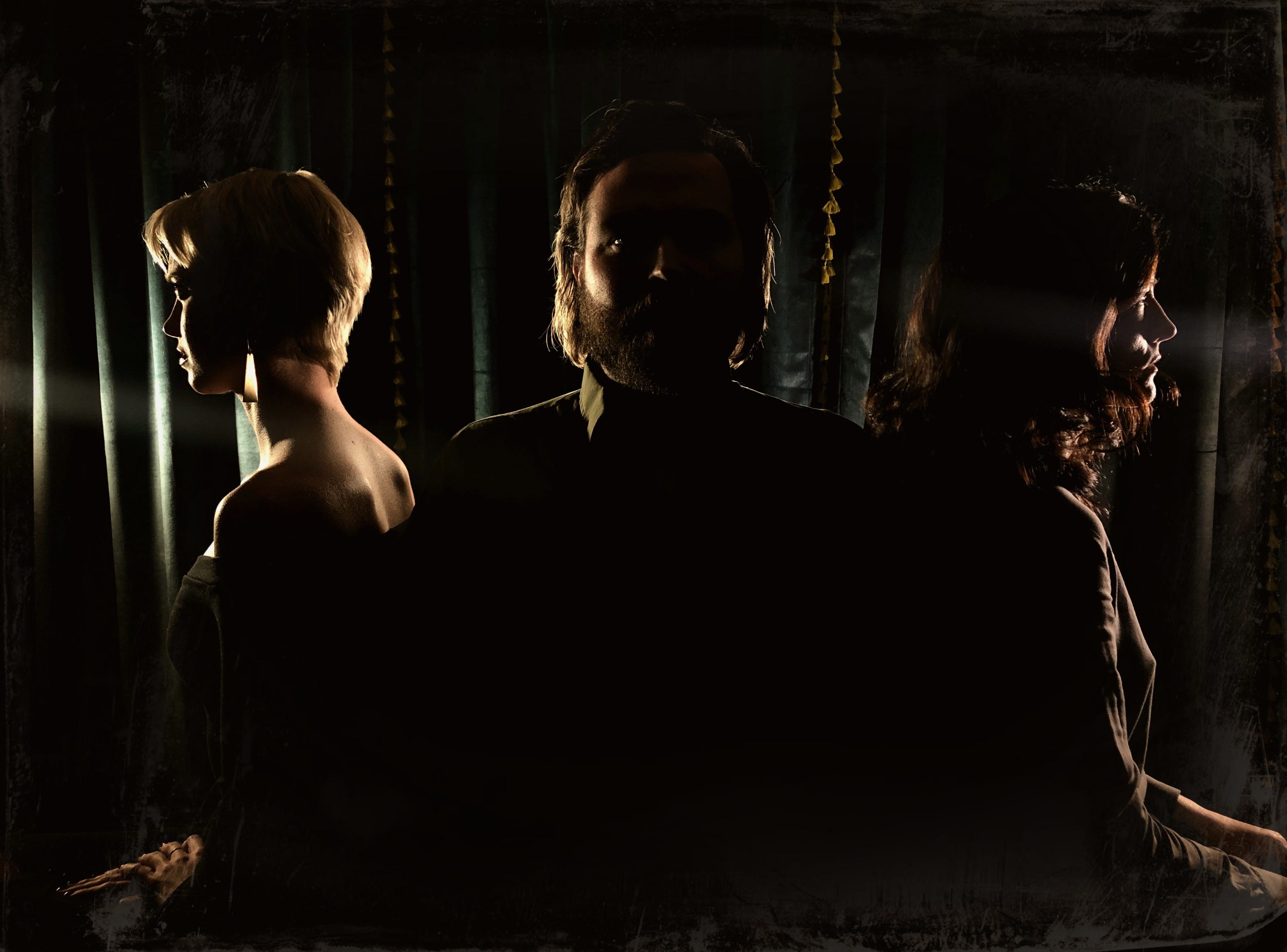
It’s always fun and interesting to enter into spaces and ideas that are unfamiliar. The mere idea of immersive has always been upheld with a slight, off-putting feeling — the feeling of danger perhaps. It’s the idea of stepping into the unknown and removing yourself from the normalities of daily life. Immersive, to me, is escapism at its purest. So when I was asked to review the classic existential piece, No Exit by Jean-Paul Sartre as produced by Noisy Nest Productions, I was thoroughly intrigued by the idea of a classic work being adapted to an immersive medium.
No Exit tells the story of three strangers coming to terms with their first hours in hell. They each talk about what ultimately brought them to their doom and what they believe may be awaiting them on the other side of their supposed waiting room — which they assume to be physical, fiery torture. However, through these conversations, they begin to see that their real torture will come from the fact that they are inherently incompatible; “Hell is other people,” Sartre famously wrote. Whether you believe this in its literal meaning is up to you, but this production seemed to speak to the opposite interpretation as the immersive elements forced vanity and seclusion.
As the audience was guided through the dark warehouse to the stage area, we were greeted with a circle of fifteen chairs, each facing outwards towards individual mirrors that were facing inwards towards the action. Which meant the audience was forced to watch the show through the frame of a mirror — an inverted theatre-in-the-round of sorts. But is it immersive? Well, no. It’s a reimagining of what a normal proscenium stage could look and feel like. It’s often said that true immersive can exist when the story could not theoretically continue without the involvement of audience. Few shows ever reach this level of immersion — sure — but No Exit actually thrives by completely removing audience agency and interactivity. Their backs are turned to the action, after all, and it made me feel even more removed from the action than a traditional staging.
A bold move, to be sure, and director Amanda Bird’s willingness to take the risk should be congratulated. As each of the characters commented on their inability to see their own reflection, I, probably in my own vanity, started appreciating my own more. Sartre wrote the production as a commentary on the small moments of living that we each take for granted. In one sense, to be living is to have a sense of self, to have a body, a being, per se, and this is something that the work left me appreciating more. In that sense, the mirrors worked. However, as the play is also a character study of three deeply emotional beings, I found the mirrors to actually hinder my ability to connect with those around me. In short, I felt lonely and emotionally drained.
The mirrors are a new type of staging that should work conceptually, but in practice, it takes most of the intimacy and the danger — what I find makes theatre great — out of the picture and made the production much harder to watch. It’s in the small details: the ability to see an actor’s twitch as they get angry, their smooth movements of sensuality, and their introspective gaze (while patrons like myself are there in the room to experience it with them) that make theatre so special. It’s what distinguishes it from the other, less immediate mediums.
Get KJ Knies’s stories in your inbox
Join Medium for free to get updates from this writer.
SubscribeSubscribe
This staging, however, forced my intimate, immediate, and emotional perspective to be impaired. Everything had to be viewed through a very small window. I felt as if I was watching something cinematic, within the confines of a frame, but the camera was often poorly positioned and missed the heat of the action.

There were times where I turned around in my seat in order to better see some of the more intense parts. When I did, I loved it. The actors’ performances, especially Christine Donlon as Estelle, were great. Her performance as a sophisticated ingenue laid the sensual and innocent groundwork for the two opposing characters to properly lose their minds — which was very fun to watch. No Exit isn’t an easy production for any actor — each of them goes through the emotional wringer every single performance. They each should be commended for their strong work. The blocking, the minimalist design, and the physical space all worked to tell the story wonderfully. Stepping into a cold, dark warehouse set an unsettling scene. The creaky doors and loud knocks against heavy wood gave the production a realism and a sense of danger that would be absent on a traditional stage. It was my first time experiencing Sartre’s writing as a performance, and it was just as interesting as I’d hope it would be.
The mirrors, however, tarnished the performance. Noisy Nest’s choice was interesting but obscured most of the intensity and left the work lacking. I’m all for proscenium theatres breaking out of traditional forms and experimenting. This experiment, though, removed the more special parts of the non-traditional theatre. No Exit was off-putting but never dangerous.
No Exit runs through February 17 in Los Angeles. Tickets are available here.
NoPro is a labor of love made possible by our generous Patreon backers: join them today!
In addition to the No Proscenium web site, our podcast, and our newsletters, you can find NoPro on Twitter, Facebook, YouTube, Instagram, in the Facebook community Everything Immersive, and on our Slack forum.
Office facilities provided by Thymele Arts, in Los Angeles, CA.




















Discussion